Hollywood & Spine Archive: Mafia Shark
An overview of the novelization to JAWS 2, originally published in July 2019.
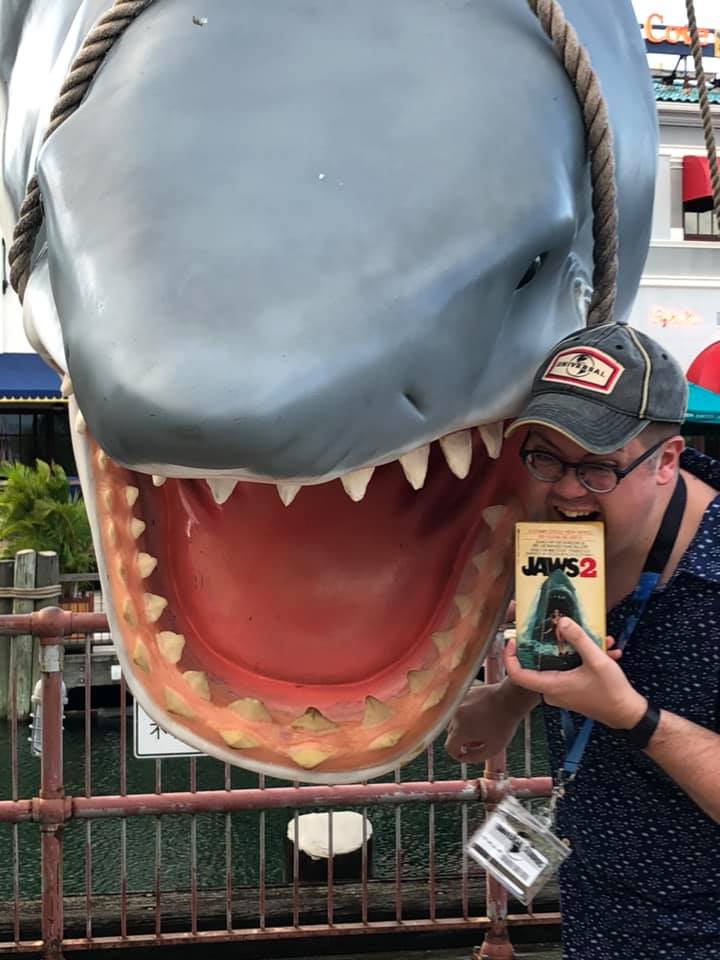
This is still one of my favorite Hollywood & Spine sends I ever did, and yet, reading it back I'm not at all sure if I really conveyed how nutso this novelization is. There are probably more books like these out there, that don't resemble the film in question that closely. (Alan Dean Foster's adaptations of Aliens and Alien 3 spring to mind, both of which play like prose versions of their laserdisc/DVD extended cuts.) But I don't think there's a book as patently ridiculous as this one. I mean, what's crazier to you: the hero from the last film failing to acknowledge that his old fishy foe has essentially returned until the last few chapters of the book, or the mob goon murdering a pharmacist (who believes an insane shark conspiracy based in zero facts) before getting killed by a cop, causing his mob uncle to cry? You can't come up with a tag line as good as "Just when you thought it was safe to go back in the water" for a theoretical movie like that. (Originally published 7/2/2019)
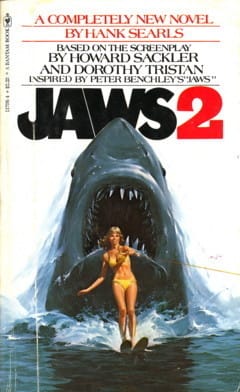
JAWS 2 by Hank Searls (based on the screenplay by Howard Sackler and Dorothy Tristan; inspired by Peter Benchley's JAWS) (Bantam Books, 1978)
The pitch: Four years after a killer great white shark threatened the beach resort of Amity, Police Chief Martin Brody has to contend with the unthinkable...another great white shark.
The author: Hank Searls (1922-2017) made a name for himself as a novelist in the '60s with tomes like The Crowded Sky and the space-race drama The Pilgrim Project (adapted into the 1968 film Countdown with James Caan and Robert Duvall). He also wrote an early two-part episode of The Fugitive in 1963 (which, coincidentally, also featured Duvall).
The lowdown: JAWS 2 is an anomaly in novelization history: it's as different from the film as Peter Benchley's JAWS is to its cinematic adaptation. I've long joked that JAWS the book would have made a bad film and vice versa; JAWS 2 may up that ante.
Universal Pictures was anxious to follow up Steven Spielberg's killer shark blockbuster with a sequel. The studio hired Howard Sackler of The Great White Hope fame to craft a new adventure on Amity Island. The Pulitzer Prize winner was no stranger to JAWS, having taken an uncredited pass at Benchley's initial screenplay (and generally, most behind the scenes agree, getting the work into a place where it was ready to film).
Sackler recommended film and stage director John D. Hancock for the project; much to the writer's chagrin, Hancock quickly set his wife, writer Dorothy Tristan, to rewrite the screenplay, adding several unfilmed subplots from Benchley's original novel. Ultimately, it was all for naught: Hancock's dailies were criticized by Universal as lacking action, and he was replaced by French director Jeannot Szwarc. Carl Gottlieb, who'd co-written the JAWS screenplay and co-starred in the film as newspaper editor Harry Meadows, streamlined Sackler's draft toward the lean monster movie that was released to moderate success.
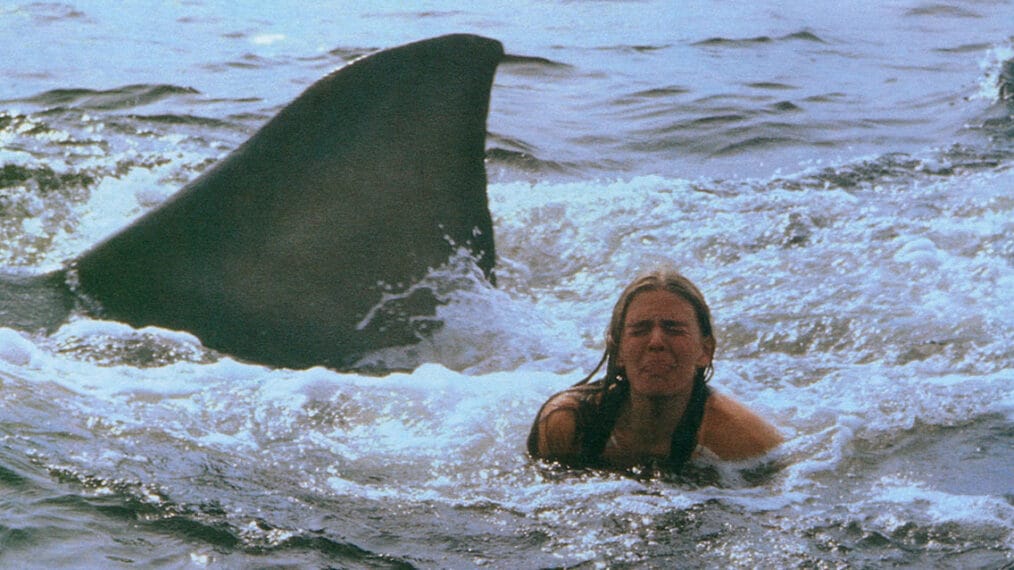
There was just one problem: Searls' book, ostensibly written concurrently to come out once the film was ready, is thus based off a screenplay that was never filmed. So JAWS 2, an at-times strange sequel to Spielberg's suspenseful masterpiece, becomes full-on Bizarro World sequel in prose form.
The skeleton of JAWS 2 is more or less the same between book and film. Amity's on a hopeful upswing after the great white terror of yesteryear (known in the book as "The Trouble"). The town and its people (including returning police chief Martin Brody, mayor Larry Vaughan - who either ran a hell of a re-election campaign or was still carrying out his term from the last picture - and newcomer real estate developer Len Peterson, who in the book is trying to bring an ambitious casino to the island) are looking forward to the summer season when, wouldn't ya know it: another great white comes calling. It eats two divers exploring the Orca (Quint's ship from the first film) and a water skier (suffering a nasty burn in the film when the skier's boat driver shoots a flare at it, blowing herself up in the process), and these disappearances have Brody spooked that history's repeating itself.
At least, that's what Brody thinks in the film. Somehow, the struggles on land in the book keep Brody from even considering a great white as anything other than a horrible memory. The killer fish's presence causes Brody grief by disrupting wildlife, from schools of cod to seals surfacing on land. A Queens cop on summer holiday shoots a baby seal for disturbing his vacation, and is in turn arrested by Brody (who oddly suspects the trigger-happy cop may be responsible for that water skier's disappearance). That threatens to set off a chain reaction, as the well-connected cop could cost the casino its gambling license, and causes the Brody family stress when Martin reluctantly keeps the injured animal in the garage of his house.
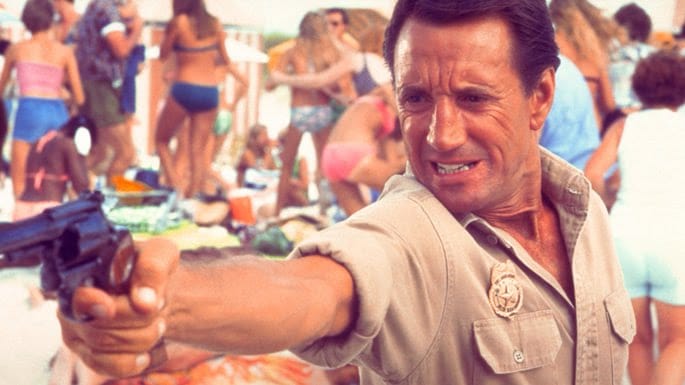
The film again finds Brody as One Good Man against the self-interested townfolk of Amity (which ultimately costs him his job after firing on a group of bluefish he mistakes for the shark). Here in the book, his conflict is weirder and worse: he soon learns the casino is financed in part by mob money from one Shuffles Moscotti, a mafioso who also calls Amity his summer home. (This subplot, apparently Tristan's key contribution to the script, is a nod to Vaughan's mob ties in Benchley's novel, and is nowhere to be found in the finished film).
So does anyone know about the fish? Enter Nate Starbuck, Amity's pharmacist, tasked by Brody to develop the film in the missing divers' recovered camera (a key plot point in the film). He's aghast at the sight of the shark, which he believes is the one that cause the original havoc on Amity. (This is one of many confusing compromises between the continuity of the original novel and the film; in the book, the shark simply succumbed to its wounds instead of getting blown up by an oxygen tank, and Starbuck assumes Brody lied.) He's also resentful that Brody sold his property to Peterson for the casino, seemingly compounding this far-fetched cover-up...so Starbuck hides the photos.
You'd be forgiven for thinking, as in Benchley's novel, that the shark risks becoming a bit part in its own story. But she's swimming around: the reader finds out Amity's dealing with a heavily pregnant female with a taste for primal carnage. It tears off a Navy chopper's sonar armature, causing it to crash (this action piece was heavily altered for the film) and spurring the local dive instructor, Tom Andrews - a bit player in the movie - to investigate. Eventually, a member of his youth diving class finds it, but panics at the sight of the shark and suffers an embolism from surfacing too fast (Andrews' fate in the film). The boy was partnered with Brody's teenage son Mike, adding to his own aquaphobia and guilt. Like father, like son.
Eventually, land and sea plots climax in stunning fashion. The former is truly bizarre: after the aforementioned Queens cop tries to sue Brody out of a job, Moscotti (who appreciates the Brody family for allowing his young nephew into the Cub Scouts) has his deaf-mute nephew/enforcer blow the cop's head off with a shotgun. When Nate Starbuck attempts to sell Moscotti the shark photos, the mobster, horrified that another famiy member is with the Brody children and other nondescript teens in a light sailing regatta, has the nephew whack Starbuck as well; moments later, a cop approaches the scene and kills the nephew as Moscotti weeps, never to be seen again.
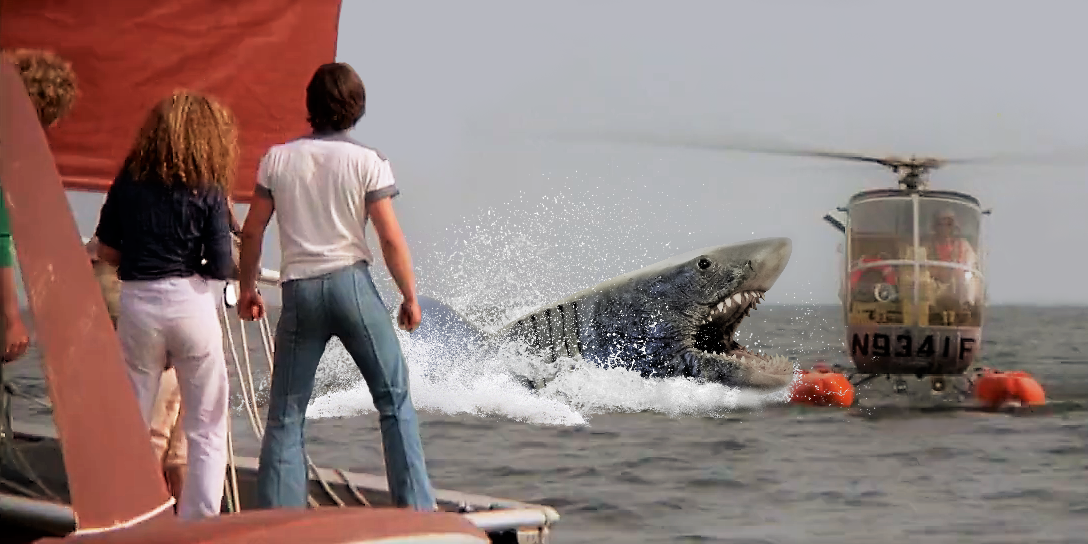
While all that's happening, Brody accompanies Andrews to finally recover the naval armature. Inevitably, the shark has other plans, and only in the last few dozen pages, when it chows down on Andrews, does famed shark destroyer Martin Brody realize there is, indeed, another menacing great white. Brody sets out to rescue the wayward regatta sailors caught in a heavy fog...and from there, the book closes out as a brief version of the film's back half, where the shark preyed on the sailing teens like Leatherface at sea. As in the finished film, Brody prevails with the help of a rogue electrical cable. Searls can't resist a maniacal epilogue, though, where the recovering seal (remember, the one that got shot) briefly encounters a baby shark (doot-doo-do-doo-do-doo), ostensibly a surviving offspring of the book's antagonist.
The last word: JAWS 2 the book retains the film's bookending first and last thirds but turns the middle into a seasick yet still docked political thriller-cum-dumbass mob flick. That the book features eight humans killed by sharks and three killed by gunfire is patently strange; for all the film's flaws, Szwarc and company knew they couldn't replicate the suspense Spielberg and crew brought to the first film, and wisely opted for thrills and chills instead of guns and ammo. Clearly, writing a novelization is a real balancing act - and it's far trickier when what you end up with looks nothing like what's on the screen.
Despite the blood in the water, Searls escaped unscathed: the next JAWS novelization, an adaptation of improbably bad fourth and final film JAWS The Revenge (1987) bears his byline.
